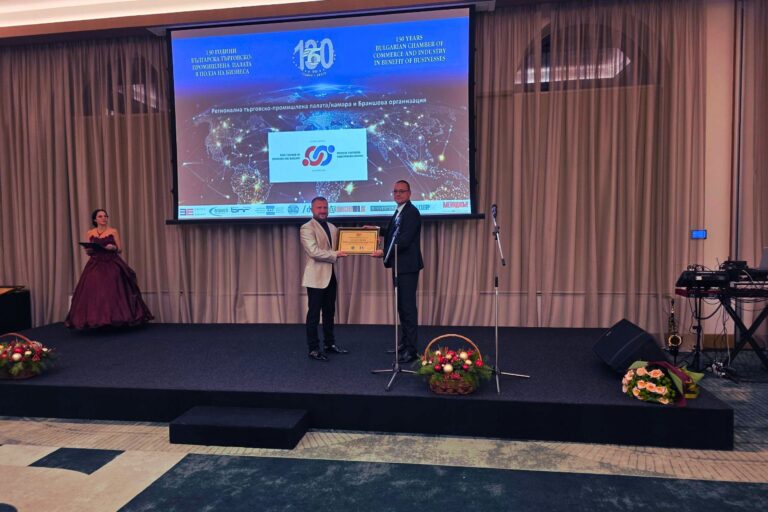How Artificial Intelligence is Changing Management: Practical Tips for Managers
Introduction
In recent years, artificial intelligence (AI) has become a transformative force, not only accelerating technological progress but also fundamentally changing the way businesses operate. Its applications range from automating routine tasks to supporting strategic decision-making. The opportunities that AI offers are no longer reserved for large technology companies – they are available to organizations of all sizes.
Managers today are in a unique position to leverage these innovations to make their work more effective. From scheduling meetings and assigning tasks to building a collaborative team culture and providing feedback, AI can be a faithful partner in everyday management practice.
In this article, we will look at how artificial intelligence can be implemented into the work of managers in a way that brings practical benefit. We will discuss:
- How to apply AI in daily work to optimize processes.
- Steps to building an effective team culture using technology.
- Ethical and responsible approaches to the use of AI.
Our goal is not just to demonstrate the potential of AI, but also to provide actionable advice that can be implemented immediately. Whether you are a small team leader or a senior manager, this article will help you discover new ways to achieve success with the help of AI.
1. How Is Artificial Intelligence Transforming Governance?
Artificial intelligence is now an integral part of modern business, and management is no exception. Its implementation not only facilitates daily tasks, but also provides opportunities for long-term process optimization.
The Possibilities of Artificial Intelligence in Management
AI provides managers with tools that can significantly increase their effectiveness in several key areas:
- Automation of routine tasks: Reduces time spent on administrative activities such as creating schedules, managing documents, and maintaining communication.
- Supporting strategic thinking: By analyzing large volumes of data, AI reveals trends, provides predictions and guidance for better decisions.
- Improving communication: Provides more personalized and effective ways to interact with teams based on analysis of employee behavior and preferences.
Examples of Using AI in The Daily Work of Managers
The capabilities of artificial intelligence offer various ways to optimize management activities, facilitating processes and improving communication within teams.
- Optimizing meetings and scheduling: AI can automatically create meeting agendas, send reminders, and summarize key takeaways after meetings. For example, in a recorded meeting, the technology can automatically create a summary with highlights and tasks to be completed.
- Personalized feedback to employees: AI analyzes employee performance and behavior, providing recommendations for more effective feedback. For example, if an employee is more motivated by praise, AI can suggest emphasizing the positive in the manager's approach.
- Decision support: Artificial intelligence systems provide real-time data that helps managers assess opportunities or risks. For example, when preparing a business plan, AI can analyze the competitive environment or financial trends.
- Improving team productivity: AI can offer project management tools that automatically distribute tasks among team members based on their skills and available time.
Artificial intelligence does not replace the role of the manager, but enriches it. With its help, routine and time-consuming tasks are minimized, allowing leaders to focus on strategic and human aspects - building trust, motivating the team and achieving long-term goals.
In the following sections, we will look at how AI can be used to build an effective team culture, how to apply it responsibly, and how to stimulate critical thinking.
2. Effective Strategies for Implementing AI in A Manager's Daily Work
Artificial intelligence provides tools that significantly facilitate managers in organizing and executing their daily tasks. These technologies not only save time, but also improve the quality of management processes, while allowing executives to focus on their strategic goals.
Meeting Organization and Planning
Managers often face the challenge of coordinating multiple meetings, ensuring efficient use of time and clear communication. Artificial intelligence can play a key role in this process:
- Agenda structuring: Generative AI tools can automatically generate agenda suggestions based on previous meetings or input. For example, if the task is a monthly report, the AI can suggest a structure that includes all the key points for discussion.
- Preparation of summaries: After the meeting ends, the technology can automatically summarize the topics discussed, decisions made, and actions planned, generating clear and accurate minutes.
- Task tracking: AI can send reminders about tasks and deadlines, ensuring that nothing is missed.
Example: A manager can use a tool that automatically adds key points to the team calendar, sends summaries to all participants after the meeting, and tracks progress on assigned tasks.
Improving Feedback
Quality feedback is the foundation for employee development and team success. Artificial intelligence can assist managers in providing clear, constructive, and personalized feedback:
- Performance analysis: AI can analyze employee performance using objective data, identifying strengths and areas for improvement.
- Create personalized recommendations: Based on the analysis, the technology can suggest appropriate ways to provide feedback, tailored to individual employee preferences. For example, an employee who prefers a direct approach can receive clear and concise feedback, while another who is more sensitive can be encouraged through positive examples.
- Real-time support: AI can provide advice or guidance on formulating feedback during the meeting.
Example: A manager can use AI to automatically generate monthly team performance reports that highlight both successes and areas for improvement, thus facilitating dialogue with employees.
Artificial intelligence offers practical solutions for organizing and optimizing the daily activities of managers. Whether it is scheduling meetings or providing feedback, AI helps create a more effective, organized, and focused approach to management. In the following sections, we will examine how these technologies contribute to building a team culture and the ethical use of AI in management.
3. Building an Effective and Collaborative Team Culture with The Help of AI
A successful team is built on a culture of collaboration, trust, and engagement. With the help of AI, managers can build an interactive and supportive environment that encourages collaboration and strengthens relationships between employees.
What Tools Support Collaboration Between Teams?
AI provides a set of tools that can improve communication, project management, and team engagement:
- Task and project management platforms: Apps like Asana, Trello, or Microsoft Teams, integrated with AI, can distribute tasks automatically, track progress, and offer personalized reminders.
- Virtual meeting tools: AI solutions, such as Zoom or Google Meet, can analyze meeting dynamics and generate summaries to facilitate collaboration.
- Chatbots for internal communication: Intelligent assistants can answer questions in real time, provide resources, or direct employees to needed materials.
Examples of Creating an Interactive and Supportive Environment
With the help of artificial intelligence, managers can implement various approaches to promote efficiency and collaboration within the team.
- Encourage open communication: AI-based platforms can analyze team feedback and offer ideas for improving communication. For example, if the system detects a lack of engagement during meetings, it can recommend ways to increase interactivity.
- Identifying team needs: With the help of AI, managers can understand what is important for the team – whether training, new tools or more support are needed. For example, analysis of internal surveys can show which aspects of the job are causing stress or difficulties.
- Stimulating innovation: Generative AI can be used to brainstorm or generate ideas within teams. Through interactive platforms, each team member can contribute suggestions that are evaluated and prioritized by the system.
- Support for remote teams: AI technologies like virtual coaching platforms or assistants help remote teams stay connected and work as one. For example, automated reminders and discussion summaries ensure that all participants are informed and engaged.
Building an effective team culture is key to the success of any organization. With the help of AI, managers can not only improve collaboration, but also create an environment where employees feel valued and supported.
In the following sections, we will examine how critical thinking and ethical aspects play a role in the use of artificial intelligence in management.
4. Ethics and Responsibility in The Use of AI
As AI becomes more widespread, the need for ethical and responsible use increases. Managers play a key role in ensuring that technology is used in a way that benefits the team, the organization, and society as a whole.
What Does “Responsible AI” Mean?
“Responsible AI” refers to the use of artificial intelligence in a way that is transparent, fair, respectful of privacy, and free from bias. Technologies should support processes without creating inequalities or displacing human input.
The key principles of responsible AI include:
- Transparency: Understanding how algorithms work and how decisions are made.
- Impartiality: Preventing discrimination that may arise due to bias in the data.
- Privacy: Protection of personal information of employees and customers.
- Justice: Confidence that AI-based solutions do not harm certain groups of people.
Why Is It Important for Managers to Ensure the Ethical Use of AI?
Managers are the bridge between technology and people. They must ensure that AI is a tool that helps the team and contributes to the success of the organization without creating risks such as:
- Overreliance on AI, which can lead to loss of critical thinking.
- Automated decisions that may not take into account specific context or human factors.
- Potential violations of ethical standards that could damage the organization's reputation.
Tips for Avoiding Common Mistakes
Implementing AI poses a number of challenges, but with the right approach, they can be overcome.
- Use AI as a tool, not a replacement for human expertise: Managers should view AI as an assistant that provides information and guidance, but the final word should always be theirs.
- Evaluate the data that powers AI: The quality of the data determines the quality of the solutions that AI will offer. Check for bias or inaccuracies before trusting automated processes.
- Provide training for the team: Help your team understand how AI works and how to use it ethically. This includes educating them about the limitations and risks of the technology.
- Regularly monitor and review AI results: Even the best systems need monitoring. Review AI solutions to ensure they meet your organization’s goals and standards.
Ethical and responsible use of artificial intelligence is not just good practice – it is a critical necessity in today’s business. Managers must ensure that the technology is used not only effectively but also fairly, thereby creating sustainable and trusted work environments. In the following sections, we will explore how AI can stimulate critical thinking and enhance coaching approaches in management.
5. Improving Critical Thinking with The Help Of AI
In the age of artificial intelligence, critical thinking skills are becoming even more important. While AI offers powerful tools for analyzing data and generating ideas, it requires human judgment to properly interpret and apply them. Improving critical thinking skills when working with AI can help managers make more informed and strategic decisions.
How AI Stimulates Critical Thinking
Artificial intelligence can play a key role in developing critical thinking by providing:
- Access to qualitative data: AI analyzes vast amounts of information and highlights trends and dependencies that would otherwise remain hidden, providing a basis for deeper understanding of specific situations.
- Scenario modeling: Through simulations and predictions, AI allows managers to consider different options and their consequences.
- Improving analytical abilities: Working with algorithms requires understanding how data is processed and asking the right questions to get relevant results.
Steps to Apply Critical Thinking when Working With AI
Steps to applying critical thinking when working with AI include careful analysis of data and conscious use of technology to make informed and ethical decisions.
- Evaluate data sources: Before trusting AI-generated data, make sure it is of high quality and relevant to your goals. Ask yourself:
- Which sources were used for the analysis?
- Does the data present the full picture?
- Ask targeted questions: AI is only as useful as the clearly defined task. Define what you want to understand and ask specific questions. For example: “What are the key factors influencing my team’s performance?”
- Interpret the results critically: The data and predictions provided by AI are based on algorithms and models. They should be viewed as a basis for decision-making, not as absolute truth. Always consider alternative scenarios and possible limitations of the technology.
- Don't forget the human factor: While AI provides information, decisions must be made with human needs and ethical considerations in mind. This requires a combination of rational analysis and empathy.
- Learn from experience: Regularly analyze the results of the decisions you make with the help of AI. What went well? What could be improved? This approach will help you hone both your critical thinking and your AI skills.
Artificial intelligence can be an extremely valuable ally in stimulating critical thinking, but success depends on managers' ability to use it skillfully and consciously. Combining AI's analytical capabilities with human judgment allows for decisions that are both informed and strategic.
Conclusion
Artificial intelligence is emerging as an indispensable tool for transformation in management. In this article, we looked at how AI can support managers in their work by making everyday tasks easier, improving collaboration within teams, and encouraging more informed decision-making. We also highlighted the importance of using AI responsibly, drawing attention to ethical considerations and the need for critical thinking when working with technology.
Implementing AI in management is not just a matter of automation – it is an opportunity to build more efficient, transparent and engaging workflows. Rather than replacing the human role, AI enriches it, providing new tools for success and growth.
The role of the Ruse Chamber of Commerce and Industry is precisely to be a reliable partner in this transformation. We strive to provide businesses with the most up-to-date information, practical tools and access to resources that encourage innovation and efficiency.
We encourage you to explore the possibilities of artificial intelligence in your daily life. Whether you are the leader of a small team or an entire organization, be open to innovation and use it as a stimulus for development. Remember that the future belongs to those who know how to combine the power of technology with human wisdom.
It’s time to take the next step – contact the Ruse Chamber of Commerce and Industry to learn more about upcoming trainings, resources, and opportunities that can help you implement AI in your organization. Together, we can build a better tomorrow today.
Practical Part
In this section, you will find specific examples of tools and applications that can facilitate management and optimize the daily tasks of managers.
Specific Examples of Tools and Applications
Here you will find a range of useful technologies that can facilitate daily management tasks and increase team efficiency.
- Task and process management:
- Automation of routine tasks:
- Zapier: Automates repetitive tasks by connecting different applications (for example, automatically sending reports from email to Google Sheets).
- Microsoft Power Automate: Allows the creation of workflows to automate processes such as document approval or query management.
- Data analysis tools:
- Tableau Public: A free data visualization tool that helps managers interpret complex information through interactive graphs and tables.
- Google Looker Studio: Provides an easy way to connect data from different sources and create visual reports.
- Improving communication:
- Microsoft Teams: With built-in automation features like smart reminders and task tracking, it makes teamwork easier.
- Otter.ai: Automatically transcribes meetings and conversations, creating structured notes that can be shared with the team.
- Generative AI for content and creative tasks:
Practical Steps for Implementing AI in Management
Introducing AI into management processes requires a planned approach that includes an analysis of current needs, selection of tools, and assessment of the effect of implementation.
- Identify routine tasks for automation: Analyze current processes and identify those that require significant resources but do not add much value. For example, organizing meetings or creating reports.
- Start with one tool: Choose one tool that addresses your team’s biggest challenge. For example, if you’re wasting time coordinating, implement a task management platform like Trello or ClickUp.
- Team training: Organize a short training on the basic functions of the chosen tool. Provide access to video tutorials or guidelines that will facilitate implementation.
- Test on a small scale: Test the new tool with a small group of employees or on one specific process to evaluate the effect. For example, automating weekly meeting schedules.
- Monitor results and optimize: Collect feedback from the team and track the effectiveness of the implemented tool. If the results are positive, expand its use to other activities.
- Integrate new features gradually: Over time, start using additional features of the tool or add new applications that can interact with existing ones. For example, integrate data analytics platforms with existing reporting systems.
Note: The publication was prepared with the help of generative artificial intelligence, which assisted in structuring and formulating the content. The final text is the result of the author's expert contribution, which guarantees its accuracy and practical focus.












